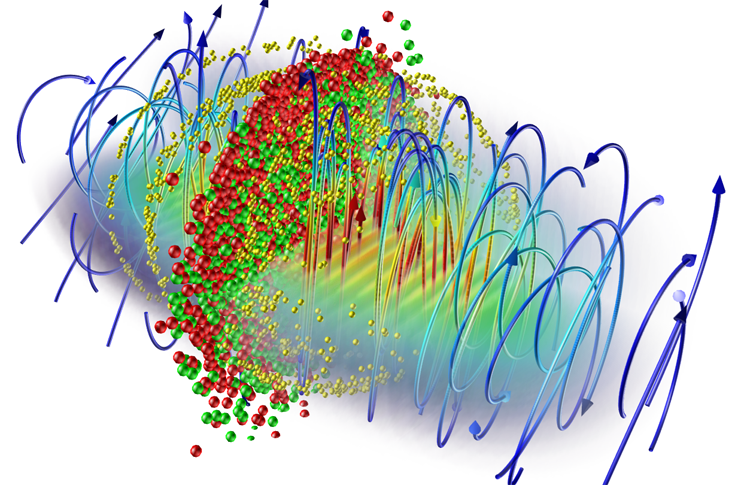Cascading in laser pulses

Among various quantum phenomena, electron-positron pair production, at the focus of an intense laser, is currently a topic of considerable interest. As is typical for particle scattering experiments, many different processes may contribute to the final yields of pairs. Out of the possible mechanisms, pair production seeded by an electron is likely to be the most dominant. This process comes in a two step process, in which non linear Compton scattering produces a real photon from the incoming electron and this real photon then goes on to create a pair via stimulated pair production (Breit-Wheeler).
The figure depicts the development of a QED cascade. The cascade is a direct consequence of the nonlinear Compton combined with the Breit-Wheeler process: successive events of hard photon emissions and electron-positron pair photo-production by hard photons. The cascade is here seeded initially by an electron trapped in the beating of two counter-propagating ultra-intense laser (I = 1024 W/cm2). The laser provides here the energy to create a photon-electron-positron plasma. The plasma in a wheel-shape reflects here the circular polarisation of the lasers that through their beating produce a rotating electric field.








